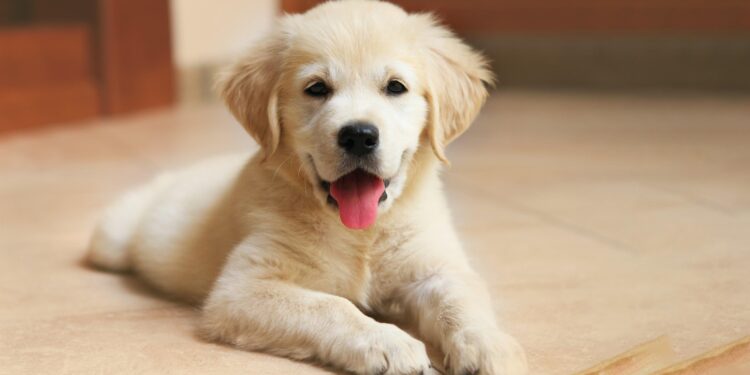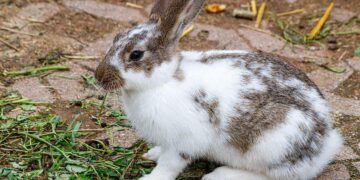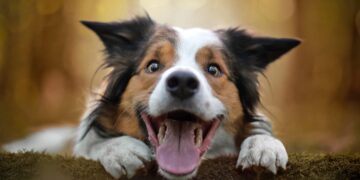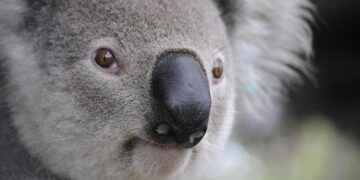Table of Contents
Part I: The Crash – When “Common Knowledge” Fails
The Weight of a Leash
In the early years of a veterinary behaviorist’s career, one is armed with science, theory, and a fervent desire to mend the broken lines of communication between humans and animals.
Yet, theory can be a fragile shield against the weight of entrenched “common knowledge.” This reality became painfully clear in a case that has remained a defining moment of my professional life.
The case involved a magnificent two-year-old Rottweiler named Max and his well-intentioned but overwhelmed owner.
They came to me as a last resort, struggling with what the owner described as “dominance aggression.” Max would guard his food bowl with a low, rumbling growl and stiffen whenever his owner approached him on his bed.
Following the prevailing wisdom of the time—a philosophy I had absorbed from older mentors and popular training books—the prescribed solution was to “be the alpha.” The treatment plan was a textbook application of dominance theory.
It involved “alpha rolls,” staredowns, and the rigid enforcement of a hierarchy where Max was to be unequivocally subordinate.
The owner was instructed to physically take Max’s food away, to force him off furniture, and to never “lose” a battle of wills.
This approach, centered on suppression and control, was the equivalent of a pilot trying to fly a plane by fighting the controls, ignoring the instrument panel, and simply commanding the aircraft to obey.
I was advising the owner to be a “Lone Pilot,” a sole commander issuing orders to a subordinate who must simply comply, without any consideration for the complex internal state or feedback of the “machine.”
The initial results seemed promising.
Max’s overt warnings—the growls—diminished.
The owner felt more in control.
But what we had achieved was not respect; it was a brittle, anxious silence.
We had effectively disabled the dog’s warning system.
The inevitable crash came a few weeks later.
A visiting child, unaware of the house rules, stumbled near Max’s food bowl.
With his ability to give a low-level warning conditioned out of him, Max escalated directly to the only option he felt he had left.
The resulting bite was not severe, but it was a bite nonetheless.
The trust was shattered, the legal and emotional fallout was immense, and Max was ultimately surrendered to a shelter, his future uncertain.
That failure was profound.
It was not a failure of the dog or even the owner, but a failure of the paradigm.
It was a stark lesson that following a flawed flight plan, no matter how confidently, leads to disaster.
This heartbreaking outcome became the catalyst for questioning everything I thought I knew about managing powerful breeds.
It forced me to seek a new model, one built not on the fragile concept of dominance, but on the robust principles of partnership, communication, and mutual respect.
Deconstructing “Badass” – The Mythical Foundation
The journey to a better model begins with deconstructing the very language that shapes our perceptions.
Terms like “badass,” “dangerous,” or “guard dog” are more than just descriptors; they are powerful, myth-making engines.
When the public thinks of such breeds, a familiar cast of characters often comes to mind: the German Shepherd, the Rottweiler, the Doberman Pinscher, the Cane Corso, and the various “pit bull” type dogs.1
These breeds, many with long histories as loyal working partners to humanity, have been typecast in a modern narrative of aggression and unpredictability.
This labeling is not a harmless simplification; it creates a dangerous, self-fulfilling prophecy.
The process is cyclical and pernicious.
It begins with media portrayals that consistently cast certain breeds as the antagonists’ weapon of choice—the Rottweiler as a literal hellhound in films like The Omen or the Doberman as a junkyard guard.4
This cinematic shorthand creates a powerful cultural association.
This reputation then attracts a subset of the population who are not looking for a canine companion that fits their lifestyle, but a living status symbol of toughness.
These owners, seeking to cultivate a “badass” image, are more likely to employ outdated and confrontational training methods rooted in dominance and physical intimidation.
They may neglect the critical needs for early, broad socialization and consistent, positive training.
The dog, a product of its genetics and its environment, responds to this handling not with respect, but with fear, anxiety, and defensiveness.7
When an incident inevitably occurs—a bite or a display of aggression—it is reported with a heavy emphasis on the dog’s breed, often ignoring the context of its handling and environment.9
This news coverage validates and strengthens the original stereotype in the public consciousness.
This cycle fuels public fear and paves the way for policy responses like Breed-Specific Legislation (BSL).
These laws, which ban or restrict the ownership of certain breeds, are a direct consequence of the mythical foundation.
Yet, major organizations and peer-reviewed studies have found BSL to be ineffective at improving public safety because it targets the wrong variable.10
It focuses on the “what” (the dog’s appearance) instead of the “why” (the complex factors of ownership, handling, training, and individual temperament that actually contribute to aggression).
To responsibly own one of these powerful breeds is, therefore, to actively work against this powerful, negative social current, armed with facts and a superior understanding of canine behavior.
Part II: The Epiphany – A New Flight Plan
From the Cockpit to the Clinic
In the wake of the failure with Max the Rottweiler, the “Lone Pilot” model of dog ownership lay in ruins.
The search for a better framework led me far from the world of veterinary medicine and into the high-stakes domain of aviation safety.
It was in reading about the development of Crew Resource Management (CRM) that the epiphany occurred.
CRM was born from a similar crisis.
In the 1970s, aviation investigators made a startling discovery: over 70% of air crashes were caused by human error, not mechanical failure.11
A NASA workshop found that these errors were not typically failures of stick-and-rudder skill, but failures of leadership, communication, and teamwork within the cockpit.11
The old aviation model was strikingly similar to the “alpha” theory in dog training.
The Captain was an unquestionable authority, a “Lone Pilot” whose word was law.
First officers were often hesitant to challenge a Captain’s decision, even when they knew it was wrong.
This rigid hierarchy was leading to preventable disasters.
The solution, CRM, was revolutionary.
It redefined the flight crew not as a commander and subordinates, but as a collaborative team.
It flattened the hierarchy to encourage open communication and empowered every crew member to contribute to situational awareness and decision-making.12
The “aha!” moment was realizing that a powerful, intelligent, high-drive dog is not a simple machine to be commanded into submission.
It is a complex, capable partner in a dynamic and sometimes high-stakes environment.
The relationship is not Pilot-to-Machine; it is Captain-to-Co-Pilot.
This reframing didn’t just offer a new technique; it provided an entirely new and more respectful paradigm for understanding, living with, and training these remarkable animals.
It was a flight plan based on partnership, not dictatorship.
The “Crew Resource Management” Paradigm for Canine Partnership
Adopting the CRM model from aviation provides a robust and comprehensive framework for responsible ownership of powerful dog breeds.
This paradigm shifts the focus from dominance and control to leadership and teamwork, recognizing the dog as an active participant in the relationship.
The core components translate seamlessly from the cockpit to the living room.
- The Captain (The Owner): In aviation, the Captain is the Pilot in Command. By law and tradition, they have the final authority and are ultimately responsible for the safety and conduct of the flight.14 This does not mean they are a dictator. A good Captain fosters an environment of open communication, values the input of their crew, and makes informed decisions based on all available information. For the dog owner, this means accepting absolute responsibility for the dog’s behavior and welfare. The Captain’s role is to provide clear, consistent, benevolent leadership and to create a safe and predictable environment for their “Co-Pilot.”
- The Co-Pilot (The Dog): The Co-Pilot, or Second in Command, is a fully qualified and capable partner, trained to fly the aircraft and assist the Captain.15 They are a vital source of information, monitoring systems and the environment, and providing crucial feedback. A powerful dog is this Co-Pilot. They are not a passive passenger. They possess their own innate skills, instincts, and a constant stream of feedback communicated through body language and behavior. A wise Captain learns to read and respect this input, understanding that it is essential for a safe journey.
- The Aircraft (The Breed Blueprint): Every aircraft model has a unique design, performance envelope, and set of operational characteristics. A pilot must know their aircraft inside and out to fly it safely and effectively. Similarly, a dog’s breed is its blueprint. It represents generations of selective breeding for specific tasks, which results in ingrained genetic predispositions, working drives, and physical capabilities. Understanding the breed’s original purpose—whether herding, guarding, or hunting—is like reading the aircraft’s flight manual. It provides the essential context for the dog’s behavior and needs.
- The Flight Plan (Training & Management): A flight plan is the detailed structure for a journey, including the route, altitude, and procedures. For a dog, the flight plan consists of the daily structure, rules, training, enrichment, and management protocols provided by the owner. A high-performance “aircraft” like a Belgian Malinois or Cane Corso cannot be left idle on the tarmac. An unemployed Co-Pilot in a high-performance jet is a recipe for disaster. The Captain must provide a clear and consistent flight plan that gives the dog a “job,” channels its energy productively, and sets clear boundaries for behavior.
- CRM Principles: The entire system is held together by the core principles of CRM: fostering Situational Awareness, ensuring Clear Communication, implementing Threat & Error Management, and cultivating effective Teamwork.12 These principles transform the owner-dog dynamic from a power struggle into a sophisticated, collaborative partnership.
Part III: The CRM Framework for Powerful Breeds
Pillar 1: Situational Awareness – Know Your Aircraft
The first duty of any Captain is to achieve total situational awareness, which begins with a profound understanding of the aircraft they are flying.
In the context of canine partnership, this means moving beyond stereotypes and acquiring a deep, functional knowledge of the dog’s breed blueprint.
This involves navigating the nuanced debate around the role of breed in behavior.
The truth lies between two unproductive extremes.
It is a myth that breed is everything, determining every action of a dog.
It is equally a myth that breed is nothing and that every dog is a blank slate.
Recent large-scale genetic studies have confirmed that while breed is a surprisingly poor predictor of certain traits like aggression, it is strongly linked to ingrained motor patterns and drives.4
A Border Collie is more likely to show eye-stalk-chase patterns, and a Beagle is more likely to follow its nose.
For powerful working breeds, this means their original “job” is encoded in their D.A. Understanding this job is the key to understanding the dog.
This leads to a critical realization: many of the “problem” behaviors seen in powerful working breeds are not signs of a “bad” dog, but rather the manifestation of their original job skills in a domestic environment that provides no appropriate outlet.
The dog is essentially unemployed, and its world-class skills are being misapplied.
This “job vacuum” is a primary root cause of behavioral issues.
Consider the Belgian Malinois.
This breed was developed for intense, focused herding work and has been further refined for high-stakes military and police operations.18
They possess an incredibly high drive, a need for a task, and a heightened sensitivity to movement.
In a pet home with no structured “job,” this genetic programming doesn’t simply disappear.
It surfaces as a relentless need for stimulation, which can lead to destructive behaviors if unmet, and a powerful prey drive that may cause them to chase cars, joggers, or small animals.18
Similarly, the Rottweiler’s history as a confident “butcher’s dog,” tasked with moving cattle and guarding property, forged a temperament that is naturally calm, powerful, and reserved with strangers.5
In a modern home, this can be misinterpreted as aloofness or aggression, and their physical power can become destructive through chewing or rough play if they are bored and under-stimulated.5
The owner’s responsibility—the Captain’s job—is not to try and erase these deeply ingrained traits.
That is an impossible and frustrating task.
The job is to acknowledge the dog’s inherent skills and re-channel them into acceptable modern “jobs.” This reframes “bad behavior” from a moral failing of the dog to a management failure of the owner.
The solution is to provide appropriate work, whether through advanced obedience, dog sports like agility or scent work, or structured daily routines involving puzzle toys and vigorous exercise.
In-Depth Breed Profiles (The Aircraft Manuals)
To be an effective Captain, one must study the flight manual.
The following profiles serve as a primer on the operational characteristics of five commonly misunderstood breeds.
- Profile 1: The German Shepherd (The Watchful Sentry)
- History: Developed in Germany by Captain Max von Stephanitz in the late 19th century, the German Shepherd Dog (GSD) was intended to be the ultimate, versatile herding dog.23 Its intelligence, trainability, and courage quickly saw it adopted into police and military roles worldwide.1
- Temperament: The GSD is defined by its loyalty, confidence, and intelligence.16 They are eager to please and form strong bonds with their families.25 However, their history as a guardian means they can be reserved or suspicious of strangers.16 They are not naturally aggressive, but their protective instinct is strong.25 If not properly socialized and trained, or if left under-stimulated, they can be prone to anxiety, reactivity, and fear-based behaviors.16
- Needs: This is a high-energy breed requiring a significant commitment to exercise—at least two hours per day of vigorous activity is recommended for an adult.25 Equally important is mental stimulation. A bored GSD will invent its own, often destructive, work.16 They thrive when they have a clear job, making them excel in obedience, tracking, and other canine sports.
- Profile 2: The Rottweiler (The Confident Guardian)
- History: The Rottweiler’s ancestors were Roman drover dogs, mastiff-types used to herd cattle alongside the legions.5 Their modern form was refined in the German town of Rottweil, where they became known as
Rottweiler Metzgerhund, or “butcher’s dogs.” They pulled carts of meat to market and guarded their masters’ money.5 When railroads replaced carting, the breed found new work in police and security roles.5 - Temperament: A well-bred and well-raised Rottweiler is calm, confident, courageous, and obedient.4 They are intensely loyal and loving with their family, often described as “goofy” and wanting to be in the middle of all family activities.5 Their guarding heritage, however, means they are naturally reserved and watchful with strangers.22 They are not indiscriminately aggressive, but they will protect their people and property with quiet confidence.5
- Needs: This powerful breed requires early, extensive, and lifelong socialization and training from a confident owner.5 Their intelligence makes them highly trainable, but they can be stubborn.22 They need ample daily exercise and mental engagement to prevent boredom and destructive behaviors.5 Due to their strength, managing their behavior and preventing habits like jumping or leash-pulling from puppyhood is critical.
- Profile 3: The Cane Corso (The Professional Bodyguard)
- History: The Cane Corso is an Italian mastiff descended from Roman war dogs, the canis pugnaces.28 After the fall of Rome, these dogs adapted to civilian life as all-around farmhands, guarding property, herding livestock, and hunting large, dangerous game like wild boar.29 The breed nearly went extinct after World War II but was revived by enthusiasts in the 1970s.28
- Temperament: The Corso’s trademark is a cool, quiet competence, like that of a professional bodyguard.29 They are intelligent, loyal, and eager to please.31 With their family, they are gentle and affectionate.30 Their guarding instinct is pronounced, but they are not meant to be overtly aggressive. They are discerning and reserved, assessing threats with a calm stability rather than explosive reactivity.28
- Needs: This breed is emphatically not for novices.28 They require an experienced, assertive owner who can provide clear leadership and structure. Lifelong socialization is non-negotiable to temper their natural wariness of strangers and territorial nature.28 They are a working breed that needs a job and significant daily exercise to stay balanced.30
- Profile 4: The Belgian Malinois (The High-Performance Athlete)
- History: One of four Belgian sheepdog breeds, the Malinois (pronounced Ma-luhn-waa) was developed as a peerless herding dog.18 Their intelligence, athleticism, and intense work ethic have made them the premier choice for elite military and police K-9 units around the world.19
- Temperament: The Malinois is defined by its intensity and high drive.19 They are exceptionally intelligent, sensitive, and form powerful bonds with their handler.18 They are “workaholics” that live for action and thrive when they have a complex job to do.19 They are not typically “cuddly” pets; their focus is on the task at hand.19
- Needs: The Malinois has extreme exercise and mental stimulation requirements that cannot be overstated. An hour or two of vigorous activity per day is the bare minimum.18 They are not suited for apartment living or for owners who are away for long periods.18 Without a demanding job and a highly active, dedicated owner, they are prone to developing severe behavioral issues, including anxiety, destructiveness, and reactivity.18 Ownership is a lifestyle commitment, not a casual hobby.
- Profile 5: The Doberman Pinscher (The Sleek Protector)
- History: Unlike breeds that evolved over centuries, the Doberman was purposefully engineered in the late 1800s by a German tax collector, Louis Dobermann.33 He sought to create the ultimate personal protection dog, combining the intelligence of old German shepherd types, the tenacity of terriers, the power of Rottweilers, and the speed of Greyhounds.33
- Temperament: The modern Doberman is a loyal, intelligent, and alert companion.23 They are known for being fearless and confident, but also sensitive and loving with their families.35 Their history as a guardian makes them naturally wary of strangers, and their protective instinct is always present.33 They are highly trainable and eager to please their owner.35
- Needs: Dobermans are energetic, athletic dogs that require consistent daily exercise and mental challenges to prevent boredom and destructive behavior.23 Early and continuous socialization is crucial to ensure their natural wariness does not curdle into fearfulness or reactivity.33 They thrive on positive reinforcement training and need a close bond with their family; they do not do well when isolated.33
| The Flight Crew’s Quick-Reference Guide to High-Performance Breeds | |||||
| Breed (Aircraft) | Original “Flight Plan” (Working History) | Key “Cockpit Instruments” (Temperament/Drives) | Required “Flight Hours” (Exercise/Enrichment Needs) | Common “System Alert” (Misconception) | True “Operational Reality” (Fact) |
| German Shepherd | Versatile herder, police/military K9 1 | Intelligent, loyal, confident, protective, can be anxious 16 | 2+ hours/day of vigorous exercise plus mental work 16 | They are inherently aggressive and dominant 3 | They are protective but not naturally aggressive; behavior issues often stem from fear, poor socialization, or lack of exercise 16 |
| Rottweiler | Roman cattle drover, butcher’s dog, guardian 21 | Calm, confident, loving with family, reserved with strangers 4 | 1-2 hours/day of exercise and mental tasks 5 | They are vicious and will “turn on” their owners 3 | They are loyal family dogs; aggression is not a breed trait but a result of poor training, socialization, or handling 4 |
| Cane Corso | Roman war dog, large game hunter, farm protector 29 | Calm, stable, intensely loyal, discerning protector 28 | High; needs a “job” and significant daily activity 30 | They are indiscriminately aggressive “attack dogs” 2 | They are confident guardians, not mindlessly aggressive; require an experienced owner and extensive socialization 28 |
| Belgian Malinois | Intense herding dog, elite military/police K9 18 | Extremely high drive, intelligent, sensitive, work-focused 19 | Very high; needs hours of work/sport daily 18 | They are just like German Shepherds, but leaner 18 | They are far more intense and have a higher work drive than most GSDs; not a typical family pet 18 |
| Doberman Pinscher | Purpose-bred personal protection dog 33 | Alert, loyal, intelligent, sensitive, bonds tightly with family 33 | High; needs daily vigorous exercise and training 23 | They are ferocious and unpredictable 1 | They are sensitive and loyal family dogs; wariness of strangers must be managed with early, positive socialization 33 |
Pillar 2: Communication – The Language of the Cockpit
A successful flight is impossible without clear, constant, and two-way communication between the Captain and Co-Pilot.
The “Lone Pilot” owner barks one-way commands, but the CRM-savvy Captain creates a feedback loop, listening intently to the information their Co-Pilot provides.
This means shifting from a purely command-based interaction to one that prioritizes understanding the dog’s primary language: its body.
This pillar of the framework requires us to clear the channel of static and misinformation by scientifically debunking the physical myths that fuel fear and justify harsh handling.
Chief among these is the myth of the “locking jaw,” particularly associated with pit bull-type dogs.
There is no anatomical feature, no special mechanism, no pin or latch in the jaw of any dog breed that allows it to “lock”.8
This idea is pure folklore, a biological impossibility.
The powerful tenacity some dogs exhibit in a bite is a behavioral trait—a refusal to let go—not a mechanical one.37
Similarly, the concept of a breed having a uniquely powerful bite force is often sensationalized and misunderstood.
Bite force in canines is primarily a function of their size, skull shape, and jaw musculature, not their breed label.37
While a large, powerful dog like a Rottweiler or German Shepherd will naturally have a stronger bite than a smaller dog, studies have shown their bite pressures to be greater than that of pit bull-type dogs, contrary to popular myth.3
The astronomical figures often quoted in media reports have no basis in scientific measurement and serve only to demonize.17
With these myths cleared, the Captain can focus on learning the true language of the cockpit.
A dog’s behavior is not random; it is communication.
Every action, whether a wagging tail, a tense posture, or a growl, is a piece of data about the dog’s internal state.
Aggression, in particular, is rarely a spontaneous event.
It is typically a final, desperate broadcast after a series of more subtle signals have been missed or ignored.
This communication breakdown follows a predictable, escalating pattern.
Imagine a dog being approached by a stranger who looms over it and reaches for its head—a common but often threatening interaction for a dog.
- Initial Feedback: The dog first offers low-level appeasement or stress signals. It might turn its head away, show the whites of its eyes (“whale eye”), lick its lips, or yawn. This is the Co-Pilot providing an initial status update: “I am uncomfortable with this approach vector. Please advise.”
- Escalated Warning: If the human—an untrained Captain—misses or ignores these subtle cues and continues the approach, the dog must escalate its communication. It might stiffen its body, lower its head, and emit a low growl. This is the Co-Pilot issuing a clear warning: “Proximity alert! Pull up! Pull up!”
- System Failure: If the human then punishes the dog for growling, they are committing a critical error. They are effectively telling the Co-Pilot to shut off the audible warning system. The dog learns that its clear attempts to communicate its distress are not only ignored but actively punished.
- The “Unprovoked” Incident: The next time the dog finds itself in a similar threatening situation, it has learned that its early warnings are useless and its louder warnings are punished. It may therefore skip the intermediate steps and go directly to a defensive snap or bite. To the uninformed observer, this appears to be a sudden, “unprovoked” attack. In reality, it was a highly predictable system failure caused by the Captain’s inability to read the instruments and heed the warnings.
Learning to read and respect a dog’s full communicative repertoire is, therefore, a non-negotiable safety protocol.
Punishing a growl is akin to disabling the cockpit’s fire alarm because the sound is annoying.
It doesn’t extinguish the fire; it only ensures you won’t be warned before the whole aircraft is engulfed in flames.
Pillar 3: Threat & Error Management – Navigating Turbulence
No flight is without potential challenges.
Aviation safety is not built on the hope for perpetually clear skies but on robust systems for identifying and managing predictable threats and inevitable human errors.
A responsible Captain of a powerful dog must adopt the same proactive mindset.
In the CRM framework, “threats” are external factors that increase the risk of a negative outcome.
For a dog owner, these are predictable elements in the environment.
They include a child who has not been taught how to interact safely with a dog, an off-leash dog rushing your on-leash dog, a crowded festival with overwhelming stimuli, or a houseguest who insists on trying to hug a dog that is clearly uncomfortable.12
The Captain’s job is not to hope these threats don’t appear, but to anticipate them and have a plan to manage them, such as creating distance, using management tools like crates or gates, or actively advocating for their dog’s space.
“Errors,” by contrast, are mistakes made by the handler.
These can include errors in judgment, like putting the dog in a situation it is not equipped to handle; errors in skill, like misreading clear body language signals; or procedural errors, like forgetting to latch the gate or being inconsistent with training rules.11
This brings us to a point of absolute clarity: the responsibility for preventing a bite or other serious incident lies 100% with the owner.
It is not about “trusting the dog” to navigate complex human social situations perfectly.
It is about the owner being trustworthy through diligent, proactive management.
This principle is strongly supported by research into dog-bite-related fatalities (DBRFs), which concludes that the vast majority of these tragic events are attributable to a collection of preventable, owner-controlled factors—such as a history of mismanagement, lack of socialization, isolation from family, and failure to neuter—rather than the dog’s breed.10
This understanding allows us to dismantle one of the most pervasive and damaging myths about powerful breeds: the idea that a loyal family dog will suddenly “snap” and “turn on” its owner for no reason.36
This narrative is a convenient but false explanation for events that are almost always the tragic culmination of a long, unseen history.
These incidents are typically preceded by months or years of ignored stress signals, chronic mismanagement, undiagnosed medical conditions causing pain or irritability, or a specific, high-stakes handling error.
The dog didn’t “turn”; the situation, managed poorly by the human, turned untenable for the dog.
The Captain is responsible for navigating turbulence, not for blaming the aircraft when it encounters a storm for which it was unprepared.
Pillar 4: Teamwork & Leadership – The Captain and Co-Pilot Dynamic
This final pillar synthesizes the entire CRM framework, moving from specific skills to the overall dynamic of the partnership.
In aviation, CRM transformed the concept of leadership from one of absolute command to one of effective team management.13
The same transformation is necessary for the owner of a powerful dog.
True leadership is not about dominance, which is an endless and anxious struggle for control.
It is about creating a clear, predictable, and benevolent structure in which the team can succeed.
The Captain’s role is to embody this benevolent leadership.
This involves setting clear and consistent rules and boundaries so the dog understands the household’s operational procedures.
It means diligently providing for all the dog’s needs—not just food and shelter, but the breed-appropriate physical exercise and mental enrichment that are essential for its well-being.38
It requires the ability to make sound decisions under pressure, always prioritizing the safety of the dog and the public.
Above all, it means building a bond based on mutual trust and respect, where the dog looks to the owner for guidance not out of fear, but out of confidence in their leadership.15
Within this structure, the Co-Pilot’s role becomes clear.
The dog’s job is to operate within the flight plan provided by the Captain.
A well-managed, well-understood, and well-cared-for dog is a reliable and willing partner.
Its needs are met, its environment is predictable, and its leader is trustworthy.
This is the foundation of a healthy, functioning team.
This approach aligns perfectly with the highest standards of the animal behavior profession, as advocated by organizations like the American College of Veterinary Behaviorists (ACVB) and the International Association of Canine Professionals (IACP), which champion science-based, humane methods and a deep, empathetic understanding of animal behavior.39
This CRM lens provides a powerful new way to interpret the common refrain that certain breeds are “not for novices.” This warning is frequently found in breed profiles for the Cane Corso, Belgian Malinois, and others.18
Rather than seeing this as arbitrary gatekeeping, we can understand it as a crucial qualification standard.
- Flying a high-performance aircraft like a Belgian Malinois requires a vastly different and more advanced skill set, knowledge base, and level of dedication than flying a simple trainer aircraft.
- A “novice owner” is, in this analogy, an unqualified Captain. They lack the necessary “flight hours” (hands-on experience with challenging dogs), “systems knowledge” (deep understanding of breed traits and behavior), and “procedural discipline” (the ability to implement management and training with unwavering consistency).
- Placing an unqualified Captain in charge of a powerful, complex, and demanding machine is profoundly irresponsible. It poses a significant risk to the Captain, the “aircraft” itself, and the public.
- Therefore, the “not for novices” warning is not an insult or a barrier. It is a fundamental safety standard, equivalent to the FAA’s requirements for a pilot to be type-rated for a specific jet. It outlines the minimum qualifications necessary to sit in the Captain’s seat.
This reframes the challenge of owning a powerful breed.
It is not about being inherently “tough” enough, but about being dedicated enough to acquire the necessary qualifications before taking on the immense responsibility.
Part IV: Earning Your Wings
The Pre-Flight Checklist for Aspiring Captains
Taking the Captain’s seat for a powerful breed is a serious undertaking.
It is a privilege that must be earned through preparation and commitment.
Before embarking on this journey, every prospective owner must conduct a rigorous and honest pre-flight check of their own readiness.
This is not about physical strength; it is about mental fortitude, education, and unwavering dedication.
The checklist includes:
- Commitment to Lifelong Learning and Training: Are you prepared to engage in consistent, positive-reinforcement-based training for the entire life of the dog? This goes beyond puppy class and involves ongoing management and skill-building.
- Commitment to Extensive Exercise and Enrichment: Can your lifestyle realistically accommodate the high physical and mental needs of a working breed? This often means one to two hours or more of dedicated, structured activity every single day, in all weather conditions.
- Commitment to Proactive Management: Do you accept 100% responsibility for proactively managing the dog’s environment to prevent negative outcomes? This includes securing your property, supervising all interactions with children and strangers, and always prioritizing safety over convenience.
- Commitment to Emotional Regulation: Can you provide calm, consistent, and confident leadership, even when faced with challenging behavior? A reactive or emotional handler creates an unstable and anxious dog.
- Commitment to Financial Stability: Are you prepared for the significant costs associated with a large breed, including high-quality food, routine veterinary care, potential emergency medical bills for conditions like bloat or hip dysplasia, and potentially higher homeowner’s insurance premiums?
Conclusion – From Power to Partnership
The story of Max, the Rottweiler from my early career, was a tragedy born from a flawed paradigm.
It was a crash caused by a “Lone Pilot” trying to command an aircraft through force.
The Crew Resource Management model offers a different path—a flight plan for success.
A success story that illustrates this is that of a Cane Corso I worked with years later, a dog surrendered for the same “guarding” behaviors as Max.
Instead of confronting the dog, we implemented the CRM model.
The owners became benevolent Captains.
They studied their “aircraft,” understanding the Corso’s history as a protector.
They established a clear “flight plan” of structured exercise, “jobs” like carrying a pack on walks, and consistent management protocols.
They learned to read their “Co-Pilot’s” subtle body language, respecting his need for space from strangers.
There was no battle for dominance.
There was leadership, management, and trust.
That dog became a stable, cherished, and safe family member.
The powerful breeds so often labeled “badass” are not living weapons or status symbols.
They are high-performance canine partners, the result of generations of breeding for intelligence, courage, and a deep desire to work with humans.
Owning one is not a right conferred by a purchase price.
It is a privilege earned through knowledge, dedication, and a profound respect for the animal’s nature.
The ultimate goal for any responsible owner must be to move beyond the simplistic, fear-based caricature of “badass” and embrace the far more complex, challenging, and deeply rewarding reality of a true canine partnership.
It is about earning your wings and becoming the Captain your remarkable Co-Pilot deserves.
Works cited
- Top 10 Guard Dog Breeds | Best Watchdogs – Bow Wow Meow Pet Insurance, accessed August 6, 2025, https://bowwowinsurance.com.au/pet-community/pet-talk/top-10-guard-dog-breeds/
- Top 10 Most Badass Guard Dog Breeds – World Animal Foundation, accessed August 6, 2025, https://worldanimalfoundation.org/dogs/top-most-bad-ass-guard-dogs/
- The 14 Most Dangerous Dog Breeds – Herbert Trial Law, accessed August 6, 2025, https://www.herberttrial.com/the-10-most-dangerous-dog-breeds/
- Debunking 6 Myths About “Bad Dog Breeds” – Sundays for Dogs, accessed August 6, 2025, https://sundaysfordogs.com/blog/debunking-6-myths-about-bad-dog-breeds
- The Rottweiler Breed Guide: Personality, History, Training, Food …, accessed August 6, 2025, https://www.thefarmersdog.com/digest/the-rottweiler-breed-guide-personality-history-training-food-and-more/
- Debunking Myths About Dog Breeds Considered Dangerous – PBS Pet Travel, accessed August 6, 2025, https://www.pbspettravel.co.uk/blog/debunking-myths-about-dog-breeds-considered-dangerous/
- Debunking Dog Myths: Common Misconceptions About Breeds You Should Know, accessed August 6, 2025, https://www.advancedanimalcare.shop/post/debunking-dog-myths-common-misconceptions-about-breeds-you-should-know
- Debunking Pit Bull Myths – The Humane Society for Tacoma & Pierce County, accessed August 6, 2025, https://www.thehumanesociety.org/debunking-pit-bull-myths/
- Pit Bull Myths Debunked!, accessed August 6, 2025, http://www.animaljla.org/wp-content/uploads/2022/01/Pit-Myths-Debunked-Website.pdf
- 5 Pit Bull-type Dog Myths Debunked – San Francisco – SF SPCA, accessed August 6, 2025, https://www.sfspca.org/blog/5-pit-bull-type-dog-myths-debunked/
- Safer air travel through crew resource management – American Psychological Association, accessed August 6, 2025, https://www.apa.org/topics/safety-design/safer-air-travel-crew-resource-management
- Crew Resource Management (CRM) | SKYbrary Aviation Safety, accessed August 6, 2025, https://skybrary.aero/articles/crew-resource-management-crm
- Importance of CRM in Aviation Industry – BAA Training, accessed August 6, 2025, https://baatraining.com/blog/importance-of-crm-in-aviation-industry/
- The Rise of the AI Co-Pilot: Lessons for Design from Aviation and Beyond, accessed August 6, 2025, https://cacm.acm.org/opinion/the-rise-of-the-ai-co-pilot-lessons-for-design-from-aviation-and-beyond/
- Pilots and Copilots — Husbands and Wives – Petals from the Basket, accessed August 6, 2025, https://www.petalsfromthebasket.com/a-successful-flight/
- German Shepherd Dog Breed Health and Care | PetMD, accessed August 6, 2025, https://www.petmd.com/dog/breeds/german-shepherd
- Myth Busted: Pit Bulls Don’t Bite Differently – Animal Farm Foundation, accessed August 6, 2025, https://www.animalfarmfoundation.org/myth-busted-pit-bulls-dont-bite-differently/
- Belgian Malinois (Mal): Dog Breed Characteristics & Care, accessed August 6, 2025, https://www.thesprucepets.com/breed-profile-belgian-malinois-1117910
- Belgian Malinois: Your Complete Guide – Dog Academy, accessed August 6, 2025, https://dogacademy.org/breeds/belgian-malinois
- What to Know About Belgian Malinois – WebMD, accessed August 6, 2025, https://www.webmd.com/pets/dogs/what-to-know-about-belgian-malinois
- www.thefarmersdog.com, accessed August 6, 2025, https://www.thefarmersdog.com/digest/the-rottweiler-breed-guide-personality-history-training-food-and-more/#:~:text=Rottweiler%20history%3A%20Roman%20roots&text=By%201900%2C%20the%20breed%20was,%2C%20rescue%2C%20and%20therapy%20dogs.
- Rottweiler | Temperament, Lifespan & Size – Britannica, accessed August 6, 2025, https://www.britannica.com/animal/Rottweiler
- Doberman Pinscher | Colors, Lifespan & Personality | Britannica, accessed August 6, 2025, https://www.britannica.com/animal/Doberman-pinscher
- www.google.com, accessed August 6, 2025, https://www.google.com/search?q=actual+temperament+of+German+Shepherds
- German Shepherd: Temperament, Lifespan, Grooming, Training | Petplan, accessed August 6, 2025, https://www.petplan.co.uk/pet-information/dog/breed/german-shepherd/
- German Shepherd Temperament : r/germanshepherds – Reddit, accessed August 6, 2025, https://www.reddit.com/r/germanshepherds/comments/1dyn8bc/german_shepherd_temperament/
- Rottweiler Temperament & Personality Traits – ElleVet Sciences, accessed August 6, 2025, https://www.ellevetsciences.com/pet-care/rottweiler-temperament/
- The Cane Corso Guide: History, Personality, Care, Food, and More, accessed August 6, 2025, https://www.thefarmersdog.com/digest/the-cane-corso-guide-history-personality-care-food-and-more/
- Cane Corso History: Where the Breed Originated – American Kennel Club, accessed August 6, 2025, https://www.akc.org/expert-advice/dog-breeds/cane-corso-history/
- The Cane Corso Guide: History, Personality, Care, Food, and More – Health Extension, accessed August 6, 2025, https://www.healthextension.com/blogs/blog/the-cane-corso-guide-history-personality-care-food-and-more
- Cane Corso: Dog Breed Characteristics & Care – The Spruce Pets, accessed August 6, 2025, https://www.thesprucepets.com/cane-corso-dog-breed-1117915
- Belgian Malinois Dog Breed Health and Wellness Guide – CareCredit, accessed August 6, 2025, https://www.carecredit.com/well-u/pet-care/belgian-malinois-dog-breed/
- Doberman Pinscher Dog Breed Health and Care | PetMD, accessed August 6, 2025, https://www.petmd.com/dog/breeds/doberman-pinscher
- Dobermann – Wikipedia, accessed August 6, 2025, https://en.wikipedia.org/wiki/Dobermann
- Doberman Pinscher Dog Breed Information: History, Personality, Training, Health & More, accessed August 6, 2025, https://headsupfortails.com/blogs/dogs/doberman-dog-breed
- 10 Common Dog Breed Misconceptions | The Dog People by Rover.com, accessed August 6, 2025, https://www.rover.com/blog/10-common-dog-breed-misconceptions/
- Misconceptions About Pit Bull Bites – Pitbullinfo.org, accessed August 6, 2025, https://www.pitbullinfo.org/pit-bulls-bites
- Revisited: Relationships in a Nutshell – Co-pilots & the importance of a joint agenda, accessed August 6, 2025, https://baggagereclaim.co.uk/revisited-relationships-in-a-nutshell-co-pilots-the-importance-of-a-joint-agenda/
- American College of Veterinary Behaviorists, accessed August 6, 2025, https://www.dacvb.org/
- International Association of Canine Professionals: Home, accessed August 6, 2025, https://iacpdogs.org/






